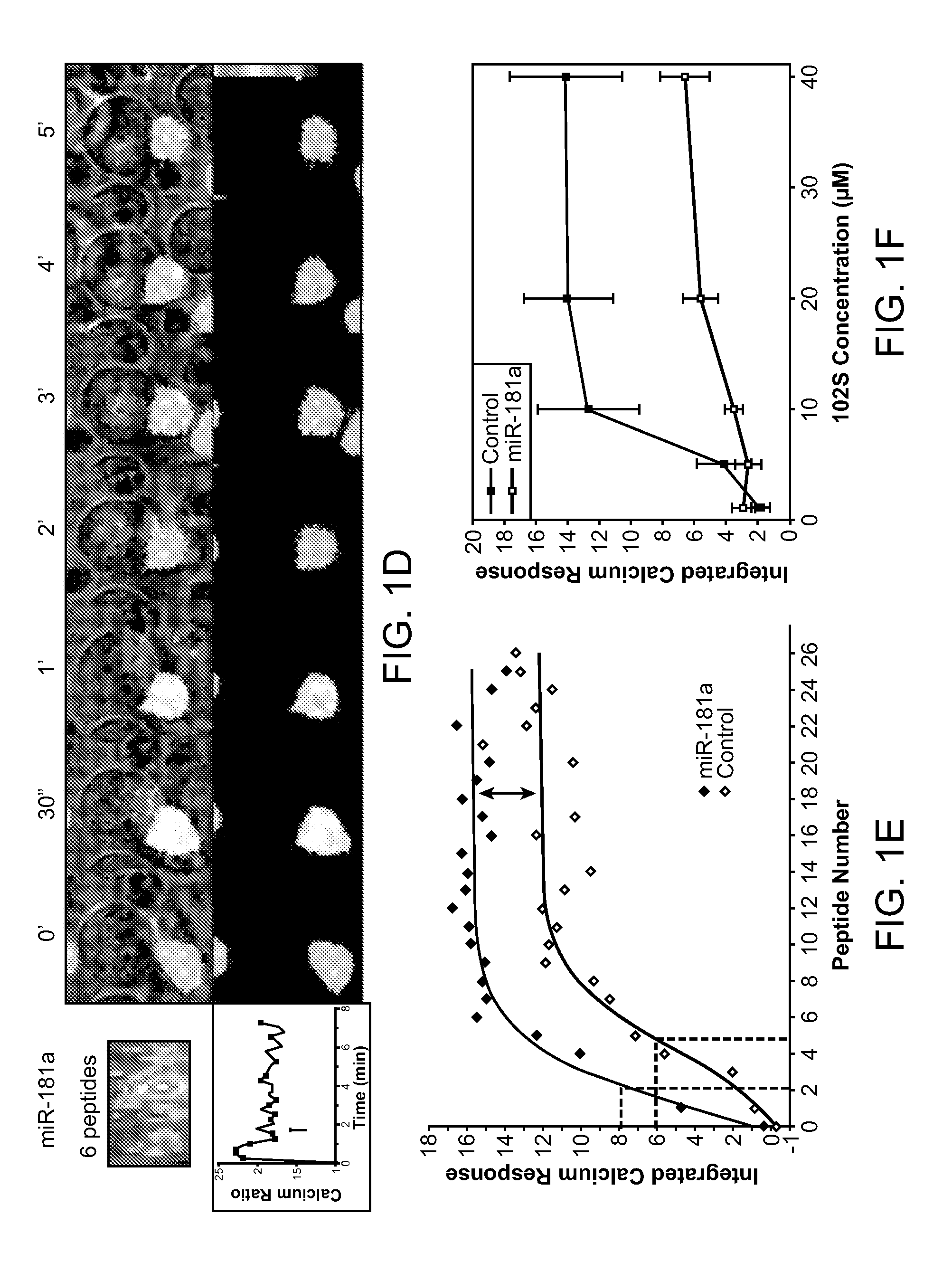Modulation of T cell signaling threshold and T cell sensitivity to antigens
a t cell signaling threshold and antigen technology, applied in the field of t cell signaling threshold and t cell sensitivity to antigens, can solve the problem that little is known about the regulation of intrinsic molecular programs, and achieve the effects of increasing the expression of the microrna mir-181a, increasing the output of t cell receptor signaling, and increasing the sensitivity of t cell to antigen
- Summary
- Abstract
- Description
- Claims
- Application Information
AI Technical Summary
Benefits of technology
Problems solved by technology
Method used
Image
Examples
example 1
[0130]T cell sensitivity to antigen is intrinsically regulated during maturation to ensure proper development of tolerance and immunity, but the molecules that govern this refinement remain elusive. Here we show that miR-181a, a member of an abundant class of ˜22 nucleotide endogenous small regulatory RNAs, can quantitatively modulate T cell sensitivity to antigens by controlling the expression of multiple target genes. Increasing miR-181a expression in mature T cells causes a marked increase in T cell activation and augments T cell sensitivity to peptide antigens. Moreover, T cell blasts with higher miR-181a expression become reactive to antagonists—the inhibitory peptide antigens that are normally incapable of T cell activation alone but can block agonist ligand stimulation. These effects are in part achieved by reducing the expression of multiple negative regulators in the T cell receptor (TCR) signaling pathway, including PTPN22 and the dual specificity phosphatases DUSP5 and DU...
example 3
Synthesis of Antagomirs
[0182]The single-stranded RNAs and modified RNA analogues (anatgomirs) were synthesized using U, CBz, ABz and GiBu with 2′-O-methyl sugar monomers using β-cyanoethyl phosphoramidite chemistry and standard oligonucleotide synthesis protocols unless otherwise specified (Ref: Damha, M. J. & Ogilvie, K. K. Oligoribonucleotide synthesis. The silyl-phosphoramidite method. Methods Mol. Biol. 20, 81-114 (1993). The modifications used in this study are listed in Table 1. Quasar-570 (Q570, Cy3) and Quasar-570 (Q670, Cy5) phosphoramidite from Biosearch Technologies was coupled to the 5′-terminal under standards solid phase phosphoramidite synthesis conditions to obtain fluorophore tagged antagomirs, 2, 6-10 and mm-antagomirs 11-14 shown in Table 1 and FIG. 19. Extended 15 min coupling of quasar-570 phosphoramidite at a concentration of 0.1M in CH3CN in the presence of 5-(ethylthio)-1H-tetrazole activator followed by standard capping, oxidation and deprotection afforded l...
PUM
| Property | Measurement | Unit |
|---|---|---|
| time | aaaaa | aaaaa |
| weight | aaaaa | aaaaa |
| weight | aaaaa | aaaaa |
Abstract
Description
Claims
Application Information
 Login to View More
Login to View More - R&D
- Intellectual Property
- Life Sciences
- Materials
- Tech Scout
- Unparalleled Data Quality
- Higher Quality Content
- 60% Fewer Hallucinations
Browse by: Latest US Patents, China's latest patents, Technical Efficacy Thesaurus, Application Domain, Technology Topic, Popular Technical Reports.
© 2025 PatSnap. All rights reserved.Legal|Privacy policy|Modern Slavery Act Transparency Statement|Sitemap|About US| Contact US: help@patsnap.com



